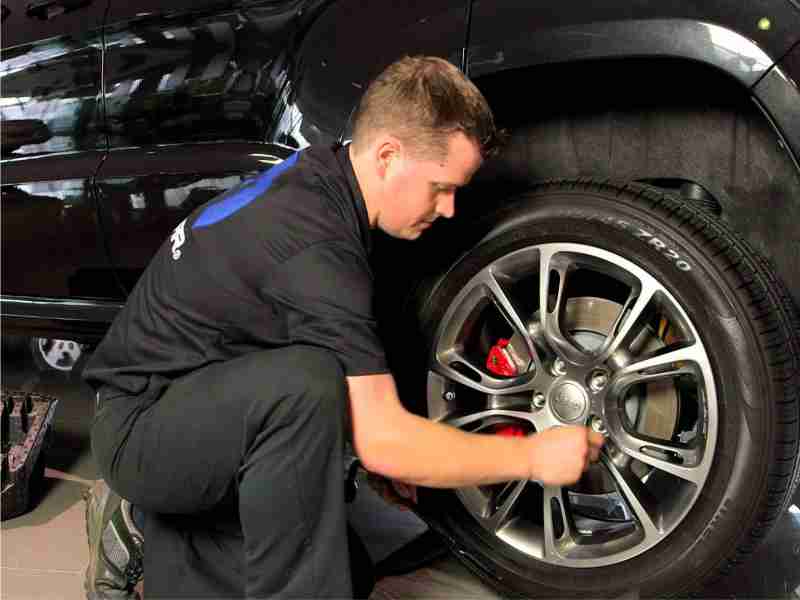Knowing how to change a tire is a necessary skill for all drivers. If you rely on a cell phone to save you in a roadside emergency, there’s always that chance you will forget to charge it, be out of range, or leave it at home. Flat tires can happen anywhere, and a cell phone is no substitute for knowing how to change a flat tire.
Thankfully, changing a tire isn’t all that hard! Just adhere to the following guidelines to be prepared in case you have a flat.
These items should have come with your vehicle:
Jack
Lug wrench
Fully inflated spare tire
Vehicle owner’s manual
If you have misplaced any of these items, or if your car did not come with these items, you should purchase new ones right away. And be sure you’re regularly inflating the spare tire to your vehicle manufacturer’s recommended PSI. You should check the spare’s air pressure every time you check your other tires.
Remember to check pressure every month and before long trips or carrying extra load.
Here are some items that don’t come with your vehicle but that you should stow in your trunk or glove box in case you have to change a flat tire:
Flashlight with working batteries
Rain poncho
Small cut of 2"x6” wood to secure the jack
Gloves
Wheel wedges
As soon as you realize you have a flat tire, do not abruptly brake or turn. Slowly reduce speed and scan your surroundings for a level, straight stretch of road with a wide shoulder. An empty parking lot would be an ideal place. Level ground is good because it will prevent your vehicle from rolling. Also, straight stretches of road are better than curves because oncoming traffic is more likely to see you.
Never attempt to change your tire on a narrow shoulder near oncoming traffic. Keep moving (slowly) until you find a safer spot. While driving on a flat risks ruining your rim, replacing a rim is better than being hit by an inattentive driver.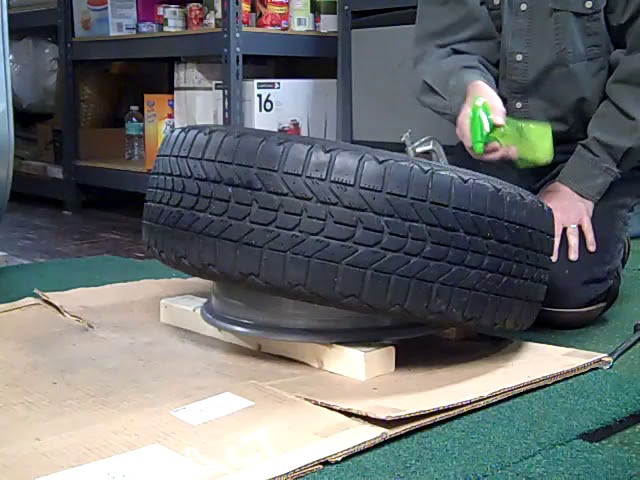
Make sure to consult your owner’s manual and review their specific steps on how to change a flat tire for your vehicle
Your hazard lights or “flashers” will help other drivers see you on the side of the road. To avoid an accident, turn them on as soon as you realize you need to pull over.
Once stopped, always use the parking brake when preparing to replace a flat tire. This will minimize the possibility of your vehicle rolling.
Wheel wedges go in front of or behind the tires to further ensure the vehicle doesn’t roll while you fix the flat tire. If you’re changing a rear tire, place these in front of the front tires. If your flat tire is at the front, put the wheel wedges behind the rear tires.
Bricks or large stones will work just as well as “real” wheel wedges. Just be sure they’re large enough to stop the car from rolling.
If your vehicle has a hubcap covering the lug nuts, it’s easier to remove the hubcap before lifting the vehicle with the jack.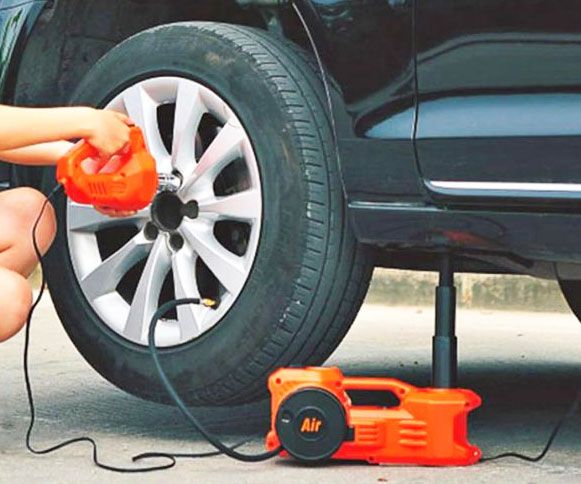 If your lug nuts are exposed, you can skip ahead to Step 6.
If your lug nuts are exposed, you can skip ahead to Step 6.
Use the flat end of your lug wrench to remove the hubcap. This will work for most vehicles, but some hubcaps need a different tool to come off. Consult your owner’s manual for proper hubcap or wheel cover removal procedures.
Using the lug wrench, turn the lug nuts counterclockwise until you break their resistance. You may have to use force, and that’s ok. Use your foot or all of your body weight if necessary.
Loosen the lug nuts about ¼ to ½ of a turn, but don’t remove them completely yet. Save that for when it’s time to remove your tire/wheel from the vehicle.
The right place for the jack is usually beneath the vehicle frame alongside the tire that’s flat. Many vehicle frames have molded plastic on the bottom with a cleared area of exposed metal specifically for the jack. To safely lift and avoid damage to the vehicle, follow the instructions for jack placement in your vehicle owner’s manual.
To prevent the jack from settling under the weight of your vehicle and coming off balance, place a small cut of 2x6” wood beneath it before attempting to raise your vehicle. This tactic is especially helpful on asphalt.
With the jack properly positioned, raise the vehicle until the flat tire is about six inches above the ground.
Never put any part of your body under the vehicle during or after raising the vehicle with the jack.
Now it’s time to remove the lug nuts all the way. Since you've already loosened them, you should be able to unscrew them mostly by hand.
Gripping the tire by the treads, pull it gently toward you until it’s completely free from the hub behind it. Set it on its side so that it doesn’t roll away.
Now place the spare on the hub by lining up the rim with the lug bolts. Push gently until the lug bolts show through the rim.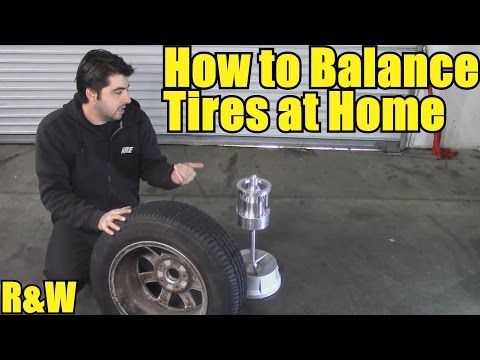
Put the lug nuts back on the lug bolts and tighten them all the way by hand. Once they are all on, check each one again, tightening as much as possible. You will tighten them with the wrench after lowering the vehicle to the ground.
Use the jack to lower the vehicle so that the spare tire is resting on the ground but the full weight of the vehicle isn’t fully on the tire. At this point, you should tighten the lug nuts with the wrench, turning clockwise, as much as you can. Push down on the lug wrench with the full weight of your body.
Bring the vehicle all the way to the ground and remove the jack. Give the lug nuts another pull with the wrench to ensure they’re as tight as possible.
If the hubcap you took from the flat tire will fit your spare, put it in place the same way you removed it initially. If it doesn’t fit, stow it away with the tire when you stow your equipment.
If it doesn’t fit, stow it away with the tire when you stow your equipment.
You have before you a jack, a lug wrench, wheel wedges, your flat tire, and possibly a hubcap. Don’t forget to put all of them in your vehicle before driving away.
You should check the tire pressure of the spare tire to make sure that it is safe to drive on. “T-Type” temporary spares, also called “mini-spares,” require 60 psi (420 kPa). If the tire needs pressure, drive (slowly) to a service station immediately.
Temporary spare tires aren’t made to drive long distances or at high speeds, so drive cautiously until you’re able to visit a tire technician. A professional should be able to determine whether your tire needs a repair or if it’s time to replace it.
Aside from taking your tire to a professional, the above procedure shouldn’t take more than 15 to 30 minutes to change a tire.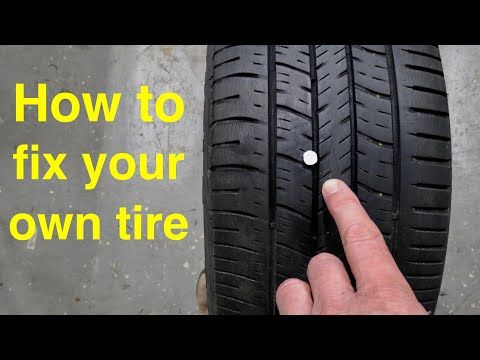 Just be sure you don’t leave out any steps.
Just be sure you don’t leave out any steps.
It’s beneficial practice changing a tire in your garage or driveway to ensure you’re ready to handle this situation if it ever happens to you.
Knowing how to fix a flat tire is great, but regular tire maintenance is even more important. In addition to reviewing this guide regularly, remember to do the following:
Keep your tires properly inflated
Rotate your tires according to the manufacturer’s guidelines
Monitor for tread wear
All of these precautions will extend the life of your tires and reduce the likelihood of a flat. While there’s no way to prevent flat tires completely, proper care can improve performance and ensure your tires last as long as possible.
There’s never a good time for a flat. That’s why Bridgestone DriveGuard tires are masterfully engineered to keep you moving for up to 50 miles at speeds up to 50 MPH without disruption.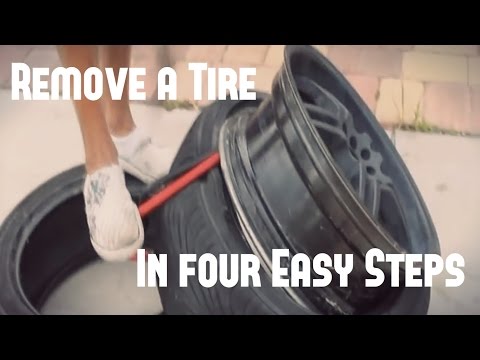
There’s never a good time for a flat. That’s why Bridgestone DriveGuard tires are masterfully engineered to keep you moving for up to 50 miles at speeds up to 50 MPH without disruption.
See Details Find Your Fit
Twice every year, the time comes round again: dig out the tools, loosen the wheel nuts, change the tyres. The winter or summer tyres must also be fitted to suit the season. Our tip, if you are not sure when is the best time to change your tyres, is to keep to the tried and tested "O-to-E" rule (October to Easter) – this is an easy way to make sure you're doing it right.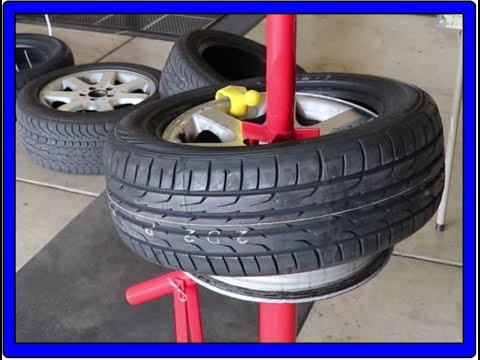
Strictly speaking, it is the wheel, i.e. the tyre and the rim, that is changed. But people usually call this "tyre changing". For a professional tyre change, you should ideally find a garage.
This puts the start of the summer tyre season at Easter. Temperatures start to become milder at this time of year. We recommend fitting your summer tyres when the temperature is steadily above seven degrees Celsius. From October, as soon as winter conditions such as frost and black ice set in, it's time: off with the summer tyres and on with the winter tyres.
In the high season, garages have very long waiting lists. However, if you book an appointment in good time, you will benefit from the expertise professionals have to offer. In general, the following applies: If you are unsure about how tyres are fitted properly, get advice from a garage. Anyone who is well-versed on how to do it can also change the tyres on their own, as we will explain in our step-by-step instructions.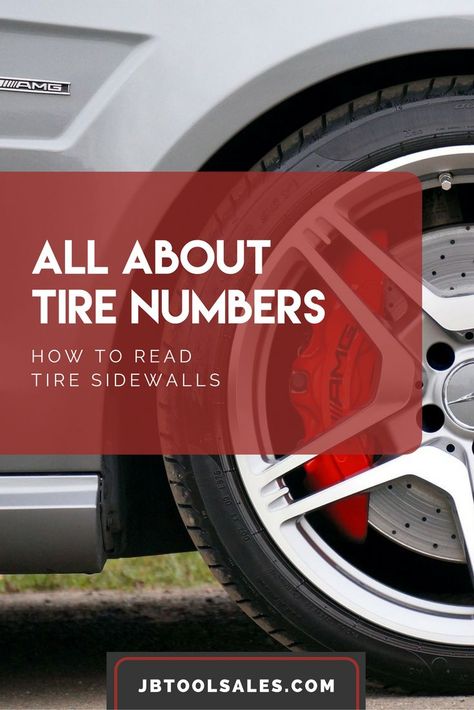
Are you aware of the rules for winter tyres in your country? Find out the information you need here.
Tyre changing: You will need these tools
From torque wrenches to impact wrenches, these tools make it easier to change tyres in your home garage:
Your basic equipment for changing tyres must include a car jack. They come in different sizes, with different load-bearing capacities and different features.
A car jack with a load capacity of at least two tonnes is usually sufficient for changing tyres at home. The maximum lifting height also plays a role here. It describes the distance from the ground when the jack is fully extended. Why is this so important for tyre changing? If you use a jack lifting height that is too low for your car, it might not be enough to jack the car up. The result: The tyres cannot be removed. You can find the correct lifting height for your car in the vehicle manual before you buy a car jack.
Another important tool to have when changing tyres is the cross wrench (also known as a 4-way wheel brace). Use the cross wrench to loosen the wheel nuts and to tighten them up again after changing the tyres. As a rule, the spanner widths on a cross wrench for cars are matched to the most common wheel nut sizes. However, you should check that the cross wrench fits the size of your wheel nuts before buying.
Using an impact wrench to loosen the wheel nuts to make this even easier, faster and less effort. It does the work completely automatically. A battery-operated impact wrench is very practical. Tight wheel nuts or bolts are best loosened using a little penetrating oil.
A torque wrench is indispensable when changing tyres. With it, you can ensure that the wheel bolts (or wheel nuts) are tightened correctly. This is extremely important for the seating and the wheel grip.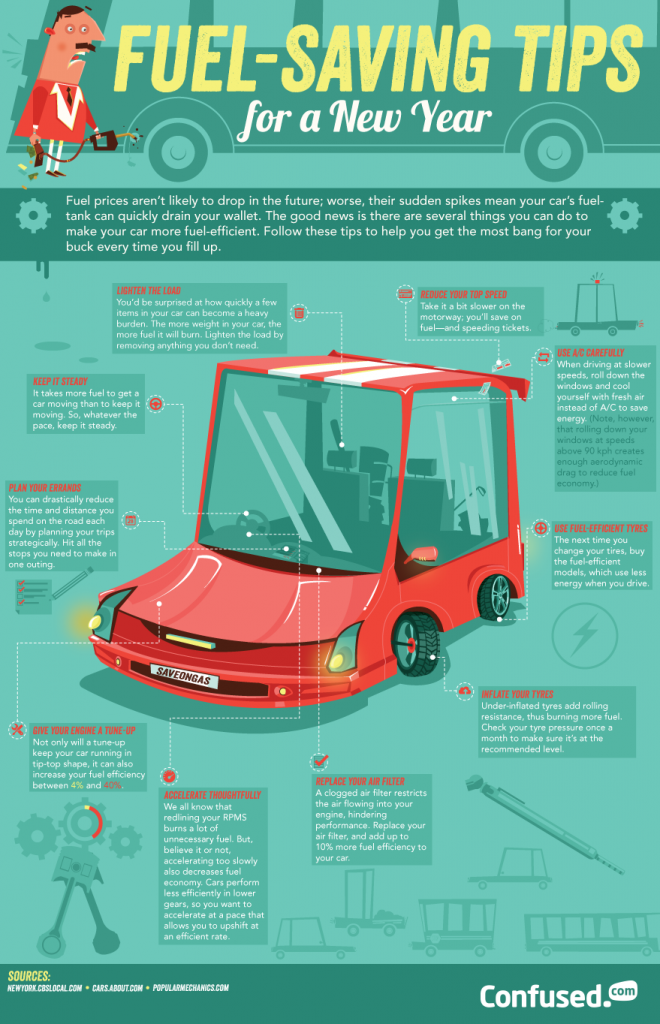 There is a stipulated torque value for each type of car. This is usually between 110 N⋅m and 120 N⋅m (Newton metres) as it depends on the vehicle model, rim size, design (steel or aluminium rims) and number of bolts. You can find which value is right for your wheels in the vehicle manual.
There is a stipulated torque value for each type of car. This is usually between 110 N⋅m and 120 N⋅m (Newton metres) as it depends on the vehicle model, rim size, design (steel or aluminium rims) and number of bolts. You can find which value is right for your wheels in the vehicle manual.
The torque wrench is only for tightening wheel bolts, not loosening them. If you use it incorrectly, the mechanism might be damaged.
After a tyre change, make sure you tighten the wheel bolts again after you have driven 50 to 100 kilometres.
You can use the wire brush to remove loose rust and dirt from the wheel hub, the wheel connecting piece and the axle.
Use the grease pencil to mark the original positions of your tyres. This is important when you store your winter or summer tyres. It's best to use these abbreviations:
FL = Front Left
FR = Front Right
RL = Rear Left
RR = Rear Right
Always wear gloves when changing tyres. Not only will they give you a better grip on the tools, they will also stop stubborn brake dust from getting on your hands and under your nails.
Not only will they give you a better grip on the tools, they will also stop stubborn brake dust from getting on your hands and under your nails.
Once you have changed your tyres once yourself, the process will quickly become routine. This is how it goes:
Step 1: Put your car into first gear in your car and then apply the handbrake. For automatic transmissions, put the car into "park".
Step 2: Use the cross wrench to loosen all of the wheel bolts in the wheel.
Step 3: Position the car jack at the point indicated on the car. Jack your car up so that the tyre no longer touches the ground – a few centimetres is enough.
The position on the car where you should place the car jack can be found in your vehicle manual. Some cars also have a mark on the sill at the lower edge of the body.
Step 4: Use the cross wrench to remove all of the wheel bolts. Take the wheel off the hub and mark it with your grease pencil.
Take the wheel off the hub and mark it with your grease pencil.
Step 5: Use the wire brush to remove any rust and dirt from the wheel hub. Now put on the new wheel.
When mounting the wheel, look to see if it is directional. The wheel can only provide its special running characteristics with full safety if it is mounted the right way round.
Step 6: Refit the wheel bolts. Use the cross wrench to tighten them lightly at this stage.
Step 7: Lower your car using the car jack until the tyre makes contact with the ground. It shouldn't be able to turn any more.
Step 8: Use the torque wrench to tighten up the wheel bolts to the stipulated torque. Always tighten the wheel bolts in a criss-cross pattern. This ensures that the wheel is seated correctly and snugly.
Step 9: Lower your car the rest of the way and then remove the car jack. Repeat these steps for all of the other wheels.
Repeat these steps for all of the other wheels.
Slacken off your torque wrench after use. A permanently tensioned spring loses its tensile force. This means that the torque value settings will no longer be correct.
Changing tyres with tyre pressure sensors
In some cases, it is advisable to have the tyre swap done professionally in a garage. For example, if your car has a direct Tyre Pressure Monitoring System (TPMS). In this case, sensitive sensors are built into your tyres which measure the actual air pressure and transmit the values directly to the control unit. If the air pressure is too low, the system will tell you that the pressure needs adjusting. If you have a direct TPMS on board, then you should only have your tyres changed by a professional. They will check the sensors in the tyres and ensure that the wheels are changed correctly.
If you drive with an indirect tyre pressure monitoring system – that is, without sensors – then you can change tyres with a TPMS system yourself. In this case, you only have to abide by the instructions given in the operating manual. You can change your tyres by yourself without any problems if you follow our instructions.
In this case, you only have to abide by the instructions given in the operating manual. You can change your tyres by yourself without any problems if you follow our instructions.
However, because tyres cannot be balanced in a home garage, it is a good idea to have a professional do this. In addition, you should note whether your tyres are directional or asymmetric, because this affects how they must be fitted. When in doubt, it is best to get advice from a professional garage.
Barum. A brand of Continental.
Good tyres. Good deal.
0003Related materials
Tire inflation with nitrogen and 7 more wirings at the tire fitting
The tire manufacturer's instructions say to change shoes when the temperature drops below +7°C. In my opinion, it's too early. There are still a lot of cars with summer tires on the roads around. And at this temperature, the braking distance on studded tires may be even longer.
I advise you to change the wheels to winter ones when the temperature drops below zero at night. That's when it really is time, because in the morning an icy area may come across on the roads. At the same time, out of habit, it will seem very slippery.
Precisely in order to do it at the most correct and convenient time. The vagaries of the weather are unpredictable. Residents of the Rostov region, for example, say that sometimes during the winter period they rearrange the wheels from winter to summer and back several times.
Dismantling wheels (that is, dismantling a tire from a rim) at home is a difficult task that requires appropriate skills and knowledge. We will describe a simpler job that, in theory, any average motorist who does not have special tools and experience in tire fitting should be able to handle. And therefore we mean that you have a complete set of serviceable winter tires mounted on disks. You remember that in the spring they did not lose pressure, there are no cuts on them, and a couple of self-tapping screws do not stick out of the tread in addition to the spikes. And, most importantly, the tread height is more than 4 mm. These are the modern requirements for winter tires. If at least one of the conditions is violated, then it is better to solve the problem before the onset of the hot tire season.
And, most importantly, the tread height is more than 4 mm. These are the modern requirements for winter tires. If at least one of the conditions is violated, then it is better to solve the problem before the onset of the hot tire season.
Related materials
If I change wheels, do I need to balance them every season?
There are car owners who meticulously balance tires before each season. In my opinion, this is not justified by anything. I recommend installing the wheels on the car, then drive at different speeds, but not higher than your usual ones. If the imbalance (it is manifested by vibrations on the steering wheel or seat) is not felt, then balancing can be postponed until future seasons. In principle, winter tires can be balanced before being stored for storage: after all, the spring period for changing wheels in tire shops is more extended in time compared to autumn, and therefore the queues are noticeably shorter.
So we take the wheels out of storage. For one, this is the corner of the garage, for the other, a balcony, for the third, the warehouse of the nearest car service that provides a wheel storage service. Depending on storage conditions, tires may have different temperatures. Wheels removed from a warm room, having cooled down by 20 ° C, will lose about 0.2 bar of pressure, and gradually, as they cool down. Well, the cold ones have nothing to lose! Therefore, cold ones can be immediately pumped up to the nominal pressure, well, maybe 0.1–0.2 bar more, given that it will only get colder further. And warm tires must either be inflated with a large margin immediately, or set the pressure at the end of all work, when the air in them cools down.
If you use a standard jack, it is better to place a special stand under the car for insurance. Well, or at least place the spare wheel so that when it falls, the threshold lies on the rim, and not on the tire. Please note that this will most likely damage the disc. Therefore, it is better to use an old unnecessary wheel.
Please note that this will most likely damage the disc. Therefore, it is better to use an old unnecessary wheel.
If you use a regular jack, it is better to place a special stand under the car for insurance. Well, or at least place the spare wheel so that when it falls, the threshold rests on the rim, and not on the tire. Please note that this will most likely damage the disc. Therefore, it is better to use an old unnecessary wheel.
Related materials
Which jack is better? — expert examination of the ZR
We find a flat area with a hard surface. If you change wheels yourself twice a year, then I strongly advise you to get a convenient jack. At least small and inexpensive, but rolling. It is noticeably more reliable and durable than the regular one that was equipped with your car. It is advisable to use a balloon wrench with a cruciform or with an extended handle - it is more convenient than the standard one attached to the car.
Prepare a wheel stop - yes, at least half a brick. Inspect the secret key for damaged code elements and clean the secret nuts/bolts on all wheels.
If the winter set of wheels has different disc characteristics, remember if spacers are needed between the disc and the hub lug - they should be prepared in advance.
The wheel jack is based on a hydraulic cylinder. Raises quickly, and lowers even faster.
The wheel jack is based on a hydraulic cylinder. Raises quickly, and lowers even faster.
 We put an emphasis under the wheel, located diagonally from the one we are going to shoot.
We put an emphasis under the wheel, located diagonally from the one we are going to shoot. 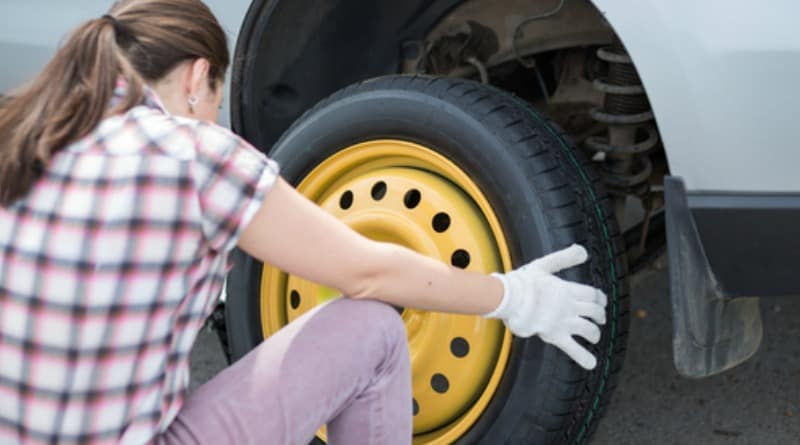 Do not overdo it. In almost all cars, except for large SUVs, the tightening torque does not exceed 100–110 N∙m. That is, on a convenient half-meter key, the force should not exceed 20 kg. Jumping on the key is definitely not worth it! The lock is tightened last and with a slightly lower torque than the rest of the nuts / bolts.
Do not overdo it. In almost all cars, except for large SUVs, the tightening torque does not exceed 100–110 N∙m. That is, on a convenient half-meter key, the force should not exceed 20 kg. Jumping on the key is definitely not worth it! The lock is tightened last and with a slightly lower torque than the rest of the nuts / bolts. Just in case, after the first ride, check the tightness of the wheel fasteners, and the next morning, check the tire pressure.
Our new video
Consumption 2-3 l/100 km! Test of the most economical UAZ
Test of the earliest surviving VAZ-2103
Test of a new crossover. Again "Chinese"? Not quite
Did you like the note? Subscribe and you will always be in the know!
Driving on Yandex. Zen
Zen
News smi2.ru
Changing shoes is the hottest off-season topic for motorists. In spring and autumn, queues traditionally line up at tire fitting points. But not everyone wants to participate in this ritual: having collected a second set of tires and wheels, many car owners change the wheels themselves. Let's talk about how to do it right - especially since every driver has to change a wheel on the road sooner or later.
To remove a wheel from the car, you first need to get it off the ground - make sure you have a good jack for this. A regular factory jack is in any car, but still it is intended for emergency replacement of a flat tire, and not for regular tire fitting. If you change all the wheels yourself twice a year, it is better to buy a jack more convenient and reliable than a regular one.
Rolling jack is a great solution if you have a garage; you will immediately appreciate its convenience. It is rolling jacks that are used at tire shops, where the speed of work comes first. A few moves and the wheel is already in the air! After a little practice, with the help of a rolling jack, simultaneously hang out two wheels at once - but you must definitely use wheel chocks (stops).
It is rolling jacks that are used at tire shops, where the speed of work comes first. A few moves and the wheel is already in the air! After a little practice, with the help of a rolling jack, simultaneously hang out two wheels at once - but you must definitely use wheel chocks (stops).
Learn more about how to choose a car jack.
Drivers often ask themselves the question: why is the car's standard cylinder key so inconvenient? The answer is simple: the length of the wrench is chosen so as not to exceed the tightening torque of the wheel nuts (100-110 Nm for passenger cars). But loosening stuck nuts often requires more force! In addition, the driver is different for the driver: for example, it will be difficult for a girl to tighten the wheel nuts to the nominal torque with a regular wrench. And don't say you haven't seen girls changing wheels.
In order not to have to kick the wrench or jump on it (which threatens to break the wheel studs), buy a reinforced wheel wrench: elongated or telescopic. When tightening nuts with such a wrench, you do not need to be zealous - remember the maximum tightening torque. And it will be much easier to unscrew the nuts.
When tightening nuts with such a wrench, you do not need to be zealous - remember the maximum tightening torque. And it will be much easier to unscrew the nuts.
When changing tires, remember to rotate them to ensure even wear. Usually tires with a large tread remain on the drive axle, because there they wear out more intensively. If the car is all-wheel drive, proceed from the design features of 4WD: the original front-wheel drive car with a connected “rear” wears out the front tires more, and the original rear-wheel drive car wears the rear tires.
Tire rotation is more competently performed according to the instructions for the car - but for this you need to mark each of the wheels in advance (for example, with a marker on the inside of the disk). Examples of standard rotation patterns are shown below, and it is recommended to swap tires for even wear every 10,000 km.
On rear- and all-wheel drive vehicles, the front tires are moved to the rear axle diagonally (Diagram A) or are changed crosswise (B).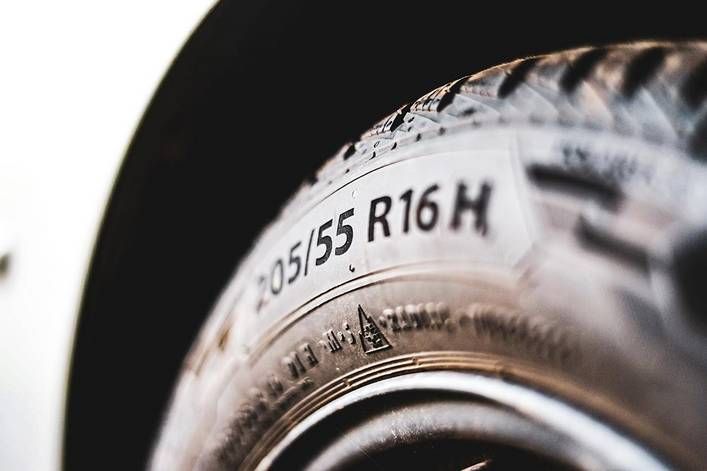 On machines with front-wheel drive, the opposite is true: the rear tires are moved diagonally forward (diagram C).
On machines with front-wheel drive, the opposite is true: the rear tires are moved diagonally forward (diagram C).
Tires with a directional tread pattern cannot be turned without overbeading. To rotate them without removing them from the disks, the front wheels are simply swapped with the rear wheels on each side of the car (Diagram D).
If the car is equipped with a full-size spare tire, not a spare tire, and you have bought a set of five new tires, be sure to include the spare tire in the rotation (diagrams E and F). This will allow you to use the kit longer and easily replace any of the main ones with a spare wheel in case of damage, because their wear will be the same. Thanks to this scheme, buying five tires is more profitable than four, due to the longer operation of the kit.
After removing the wheel, clean the wheel studs with a wire brush and brake cleaner. You also need to clean and grease the mating surface of the hub with graphite grease so that the rim does not stick to it.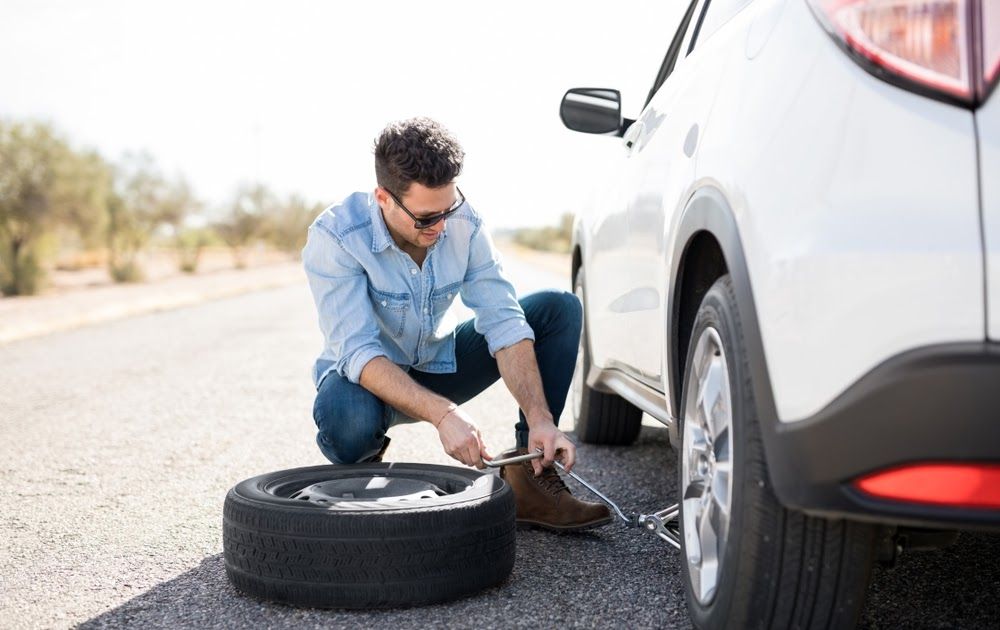 Graphite is chemically neutral, does not interact with nickel and chromium, therefore it does not oxidize and does not damage rims.
Graphite is chemically neutral, does not interact with nickel and chromium, therefore it does not oxidize and does not damage rims.
Whether it is necessary to lubricate the studs themselves is an open question: some automakers recommend it, while others directly prohibit it. If you use standard wheel nuts with a cone, which attract the disk well, and observe the tightening torque, then there will be no harm from a small amount of graphite grease on the studs - most importantly, do not use other types of lubricants (for example, lithium) in this assembly.
The wheel mounted on the hub is tightened crosswise (4 studs) or with an asterisk (5 and 6 studs), moving from each nut to the opposite one, and not to the next one - this way the even tightening is achieved.
The wheel nut tightening torque for most cars is 100-110 Nm, SUVs: 120-150 Nm. The exact parameters for tightening the nuts are indicated in the instructions for the car, and to withstand them, use a torque wrench. Of course, not all motorists have it. Without a “speaker”, be guided by the length of a regular wheelbarrow wrench and common sense: do not use the pipe as a lever and do not press on the wrench with your foot.
Of course, not all motorists have it. Without a “speaker”, be guided by the length of a regular wheelbarrow wrench and common sense: do not use the pipe as a lever and do not press on the wrench with your foot.
Tire pressure may change after six months of storage - be sure to check it after installing all the wheels using a manual pressure gauge. Pressure is always measured with cold tires. If the pressure in the tires is different, equalize it with a compressor, otherwise the car will pull to the side when driving.
Learn more about tire pressure: how and why to measure it.
The removed set of wheels must be stored correctly until the next season. This requires a well-ventilated, dry area, protected from the sun and precipitation - for example, an indoor heated parking lot. Private garages are not always suitable: if the roof leaks after every rain, then the humidity will destroy the paint on the rims in six months.